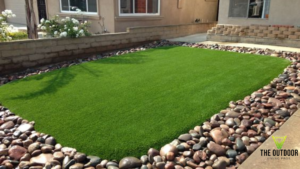Synthetic grass has become an increasingly popular alternative to natural grass due to its low maintenance requirements, durability, and year-round greenery. Whether you’re considering it for a residential lawn, commercial space, or sports field, there are several important factors to consider before installation. Here’s what you need to know to ensure a successful synthetic grass installation.
1. Purpose and Usage
Before choosing synthetic grass, determine the primary purpose of the area. Will it be used for a backyard lawn, a children’s play area, a pet-friendly space, or a sports field? Different types of synthetic grass are designed for various uses, with specific features like enhanced durability for sports or antimicrobial properties for pet areas.
2. Quality of Materials
Not all synthetic grass is created equal. High-quality synthetic grass is made from durable materials like polyethylene or nylon, which offer a realistic look and feel, as well as UV resistance to prevent fading. Check the product specifications, including pile height, density, and backing material, to ensure you’re getting a long-lasting and realistic product.
3. Installation Process
Proper installation is crucial for the longevity and performance of synthetic grass. The process typically involves several steps:
- Site Preparation: Clearing the area of existing vegetation and debris, and ensuring proper drainage.
- Base Layer: Installing a compacted base layer of crushed rock or gravel to provide a stable foundation.
- Laying the Turf: Cutting and securing the synthetic grass over the base layer, ensuring seams are well-hidden and edges are properly anchored.
- Infill: Applying infill material (such as sand or rubber granules) to support the grass fibers and improve durability. Consider hiring a professional installer to ensure each step is done correctly, or if you prefer a DIY approach, follow detailed instructions carefully.
4. Drainage and Water Management
Good drainage is essential to prevent water accumulation and maintain the integrity of the synthetic grass. Ensure the chosen synthetic grass has a permeable backing that allows water to drain through easily. Additionally, the base layer should be designed to facilitate proper drainage, avoiding issues like pooling or waterlogging.
5. Maintenance Requirements
One of the main advantages of synthetic grass is its low maintenance. However, some upkeep is still required to keep it looking its best. Regularly remove debris, such as leaves and branches, to prevent mold and mildew. Brush the grass fibers occasionally to keep them upright and evenly distributed. Depending on usage, you may need to replenish the infill material periodically.
6. Environmental Impact
Consider the environmental impact of synthetic grass. While it reduces water consumption and eliminates the need for harmful pesticides and fertilizers, it is made from synthetic materials. Look for products made from recycled materials or those that are recyclable at the end of their lifespan. Additionally, proper disposal and recycling of old synthetic grass are important to minimize environmental impact.
7. Cost Considerations
The initial cost of synthetic grass installation can be higher than natural grass, but it offers long-term savings on maintenance, water, and landscaping costs. Obtain quotes from multiple suppliers and installers to compare prices. Keep in mind that investing in higher-quality materials and professional installation can lead to better durability and performance, ultimately providing better value.
8. Aesthetic and Design
Synthetic grass comes in various shades of green, blade shapes, and textures. Choose a style that complements your landscape and looks natural in your environment. Some options even mimic the look of specific grass types found in different regions. Consider the overall design and how the synthetic grass will blend with other landscaping elements.
Conclusion
Installing synthetic turf can be a great investment, providing a beautiful, low-maintenance alternative to natural grass. By considering the purpose, quality of materials, installation process, drainage, maintenance, environmental impact, cost, and aesthetic, you can make an informed decision and enjoy a lush, green lawn year-round. Proper planning and attention to detail will ensure that your synthetic grass installation meets your needs and enhances your outdoor space for years to come.
12600 S Belcher Rd Suite 106A, Largo, FL 33773, USA
(888) 297-6972


Recent Comments